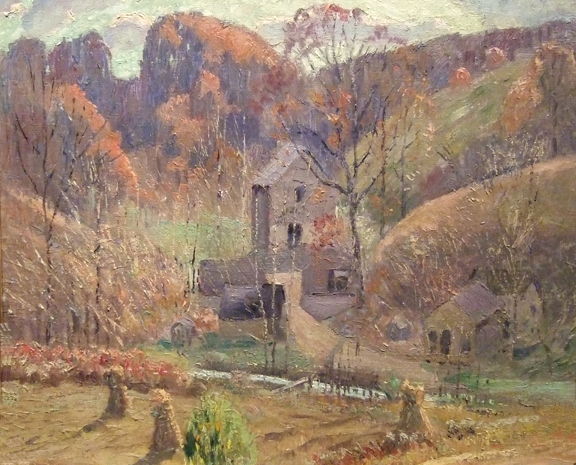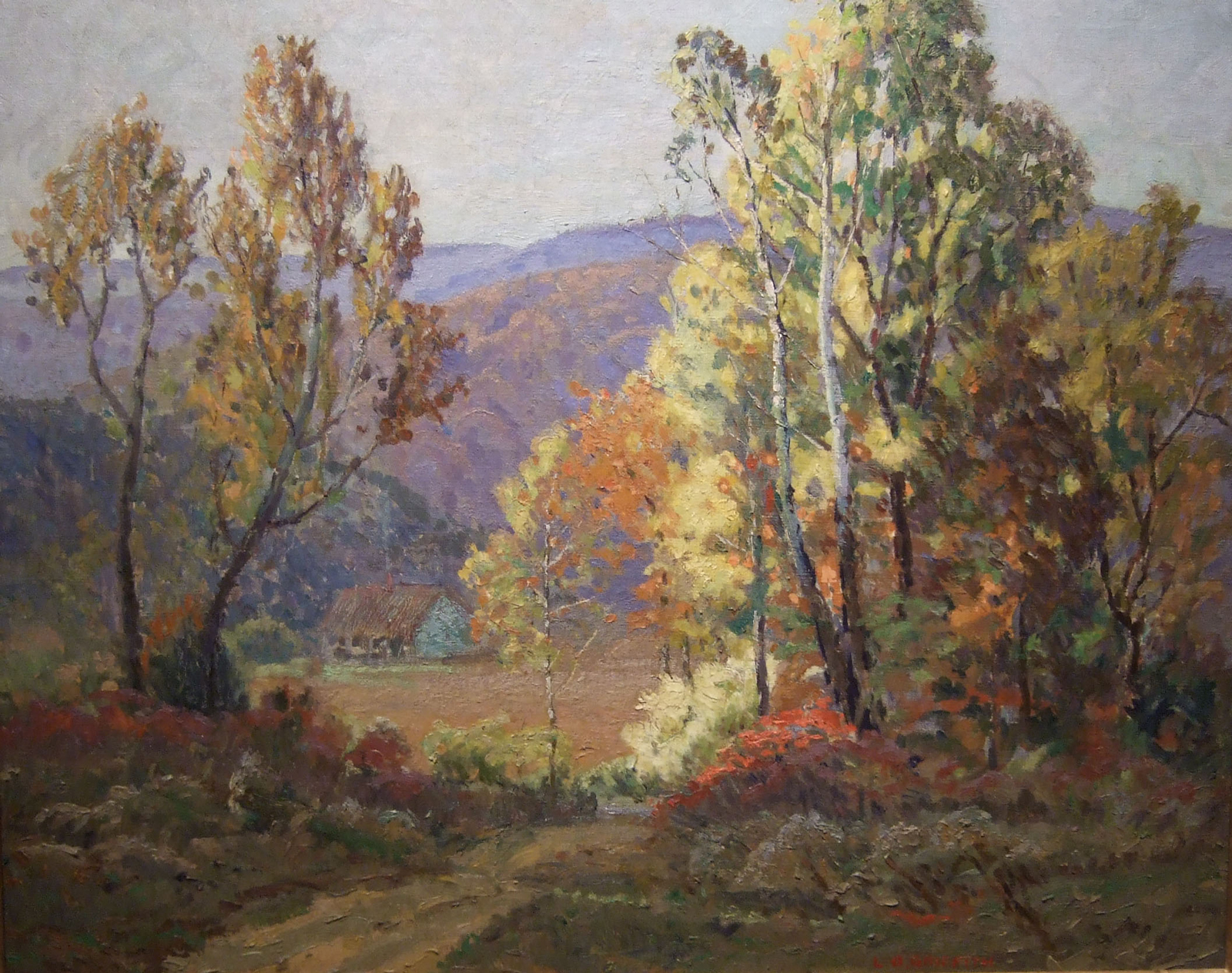Louis Oscar Griffith
Louis Oscar Griffith (1875-1956) — nicknamed “L.O.” or “Griff” by his friends — was a printmaker and Impressionist landscape painter with deep ties to Indiana and Texas. He was known for his delicate, muted palettes in his paintings; critics refer to them as “tone poems” imbued with “atmospheric mystery.” As a printmaker Griffith was an exacting perfectionist, toiling for hours over what would either become “a thing to be destroyed or of lasting beauty.”
Born in Greencastle, Indiana, Griffith and his family moved to Dallas, Texas when he turned four. Around age fifteen, while working as a clerk at an upscale Dallas hotel, Griffith started taking art classes with Frank Reaugh, one of the most respected landscape artists in the state. Though Griffith would leave three years later to continue his studies at the St. Louis Academy of Fine Arts and the School of the Art Institute of Chicago, he frequently returned to participate in Reaugh’s legendary sketching trips across West Texas, undertaken with horses and wagons across rugged terrain.
After graduating from the Art Institute, Griffith became a successful commercial artist in Chicago, teaching himself etching and coming to work for the Barnes-Crosby Engraving Company. In 1903 he exhibited one of his paintings for the first time with the Art Institute, and shortly after joined the community at the Palette & Chisel Club. For the next decade or so, Griffith traveled to West Texas, coastal Maine, New Orleans, Mexico, England, and France, creating work and developing his techniques as both a printmaker and Impressionist.
In 1922, having recently married and tiring of commercial work, Griffith, his wife Carolyn Mausby, and their new baby moved to Nashville, Indiana, where Griffith converted an old creamery into a studio. There he helped build a thriving arts community, acting as a charter member of the Brown County Art Gallery Association and Brown County Art Guild.
Griffith’s work was nationally renowned: he won a bronze medal at the 1915 Panama-Pacific International Exposition in San Francisco, exhibited with the Pennsylvania Academy of Fine Arts in 1921, and had a special exhibition mounted by the Smithsonian in 1945 that showcased his prints.

